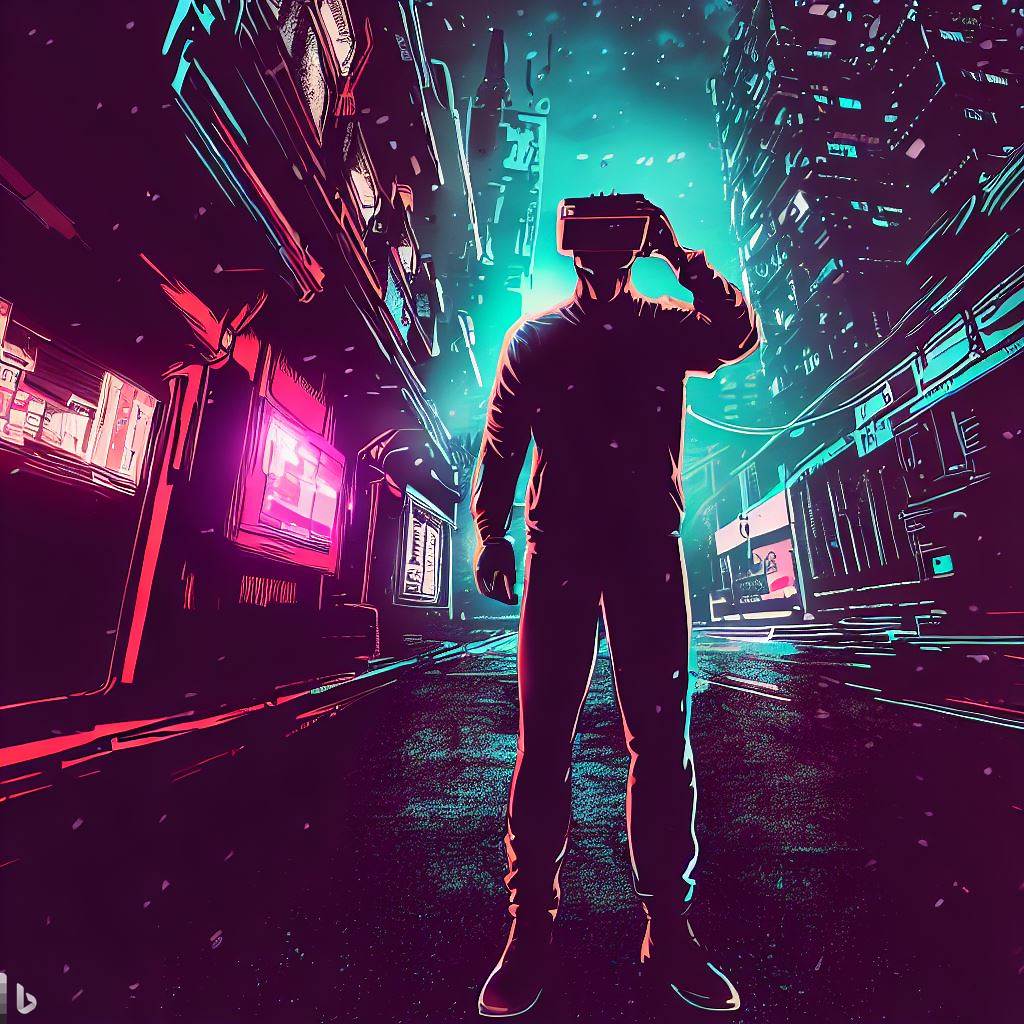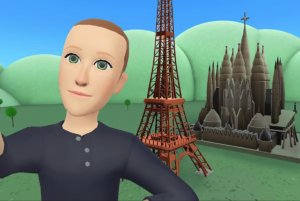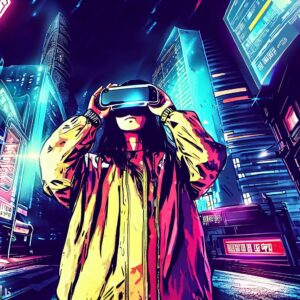Hey there, curious mind!
Let me ask you something – have you ever wondered, when will the Metaverse come out? If you’ve found yourself pondering about this exciting new digital frontier, you’re in the right place! It’s a question many of us have been asking, and today, I’m going to dive deep into the world of the Metaverse to help quench your curiosity.
But first, let me share a little story with you. I remember the first time I stumbled upon the concept of the Metaverse. I was sipping my morning coffee, scrolling through my news feed, and there it was – an article about the potential of a fully-immersive digital universe. My jaw dropped. It felt like something straight out of a sci-fi novel, yet it was becoming a reality.
That’s when I realized I needed to learn more. And guess what? I’ve been captivated ever since. So grab a cup of your favorite beverage, get comfy, and let’s explore this thrilling new world together.
Defining the Metaverse: What is it and why should you care?
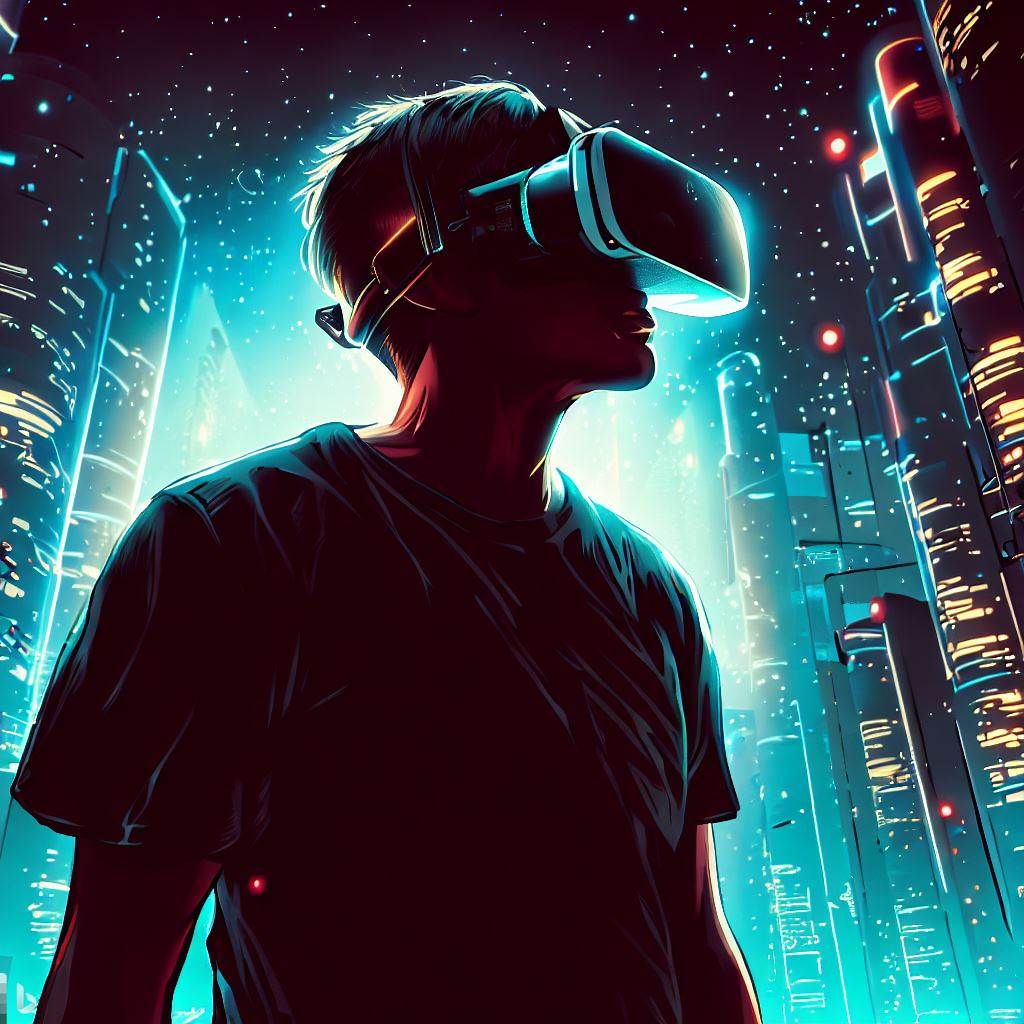
To truly understand the significance of the Metaverse, we must first define what it is. In its essence, the Metaverse can be described as a vast, interconnected, and immersive digital universe that transcends the boundaries of our physical world. It’s a place where you can explore, interact, create, and even work in a seemingly endless array of virtual environments.
Now, you might be thinking, “Isn’t that just virtual reality?” While it’s true that VR plays a crucial role in the development of the Metaverse, it’s important to note that the Metaverse is much more than just VR. In fact, I’ve written an entire article on this topic: Metaverse vs VR: The Differences You Need to Know. Give it a read if you’re interested in diving deeper into the nuances between the two.
So, why should you care about the Metaverse? Well, let me put it this way – imagine a digital world where you can:
- Connect with people from all over the globe in real-time, regardless of geographic barriers.
- Experience mind-blowing entertainment, from concerts to gaming, in a completely immersive way.
- Learn and grow by accessing limitless educational resources and virtual training simulations.
- Work remotely in shared virtual spaces, fostering collaboration and productivity like never before.
Sounds pretty amazing, right? The Metaverse has the potential to revolutionize the way we live, work, and socialize, making it a topic worth exploring and understanding.
To help paint a clearer picture of the Metaverse, let’s take a look at its journey so far and the milestones that have been achieved in the realm of virtual worlds.
The journey so far: A brief history of virtual worlds.
The concept of the Metaverse has been around for quite some time, and its roots can be traced back to the early days of video games and online communities.
Let’s take a stroll down memory lane and explore the key milestones that have shaped the evolution of virtual worlds. Along the way, you’ll discover how these developments have contributed to the Metaverse as we know it today.
The 1980s – The Birth of Virtual Worlds

In the 1980s, we saw the emergence of MUDs (Multi-User Dungeons) – text-based virtual worlds that allowed multiple players to interact with one another and their environment. MUDs laid the foundation for modern virtual worlds and massively multiplayer online games (MMOs).
Key takeaway: MUDs introduced the concept of shared, persistent virtual spaces where users could interact and collaborate.
The 1990s – The Rise of MMOs and 3D Graphics

The ’90s brought forth a new era in the realm of virtual worlds. The advent of 3D graphics, coupled with the growth of the internet, gave rise to massively multiplayer online role-playing games (MMORPGs) such as Ultima Online and EverQuest. These games allowed thousands of players to simultaneously explore, socialize, and complete quests in rich, immersive environments.
Key takeaway: The 1990s showcased the potential of large-scale, graphically immersive online experiences, setting the stage for the Metaverse’s vision.
The 2000s – Social Virtual Worlds and User-Generated Content

In the early 2000s, we witnessed the birth of social virtual worlds like Second Life and IMVU. These platforms enabled users to create and customize their avatars, build and furnish virtual spaces, and participate in various in-world activities. The emphasis on user-generated content and social interactions marked a significant shift in the virtual world landscape.
Key takeaway: User-generated content and social interactions became key pillars of virtual world experiences, paving the way for Metaverse’s community-driven vision.
2010s – VR, AR, and the Rise of Blockchain

The 2010s saw significant advancements in virtual reality (VR) and augmented reality (AR) technologies, further blurring the lines between the physical and digital worlds. In addition, the rise of blockchain technology allowed for the creation of decentralized virtual worlds like Decentraland and Cryptovoxels, where users can buy, sell, and trade digital assets and virtual land on a public ledger.
Key takeaway: Cutting-edge technologies like VR, AR, and blockchain have accelerated the development of the Metaverse by enhancing immersion and introducing digital asset ownership.
2020s – The Metaverse Takes Shape

In recent years, the Metaverse has begun to take shape as tech giants like Facebook (now Meta) and Microsoft invest heavily in its development. New virtual platforms such as Fortnite and Roblox have emerged, offering glimpses of what the Metaverse could look like – seamless, interconnected experiences spanning gaming, socializing, and commerce.
Key takeaway: The 2020s have seen rapid advancements in the Metaverse’s development, with major players investing in its realization and the emergence of platforms that embody its core principles.
The journey so far has been nothing short of fascinating. As we’ve seen, the evolution of virtual worlds has involved numerous breakthroughs and innovations across multiple decades. Each milestone has contributed a valuable piece to the puzzle, bringing us closer to the realization of the Metaverse.
Now that we have a solid understanding of the history of virtual worlds, let’s turn our attention to the present day and explore the latest innovations and developments in the Metaverse space.
Current developments: The latest innovations in the Metaverse space.
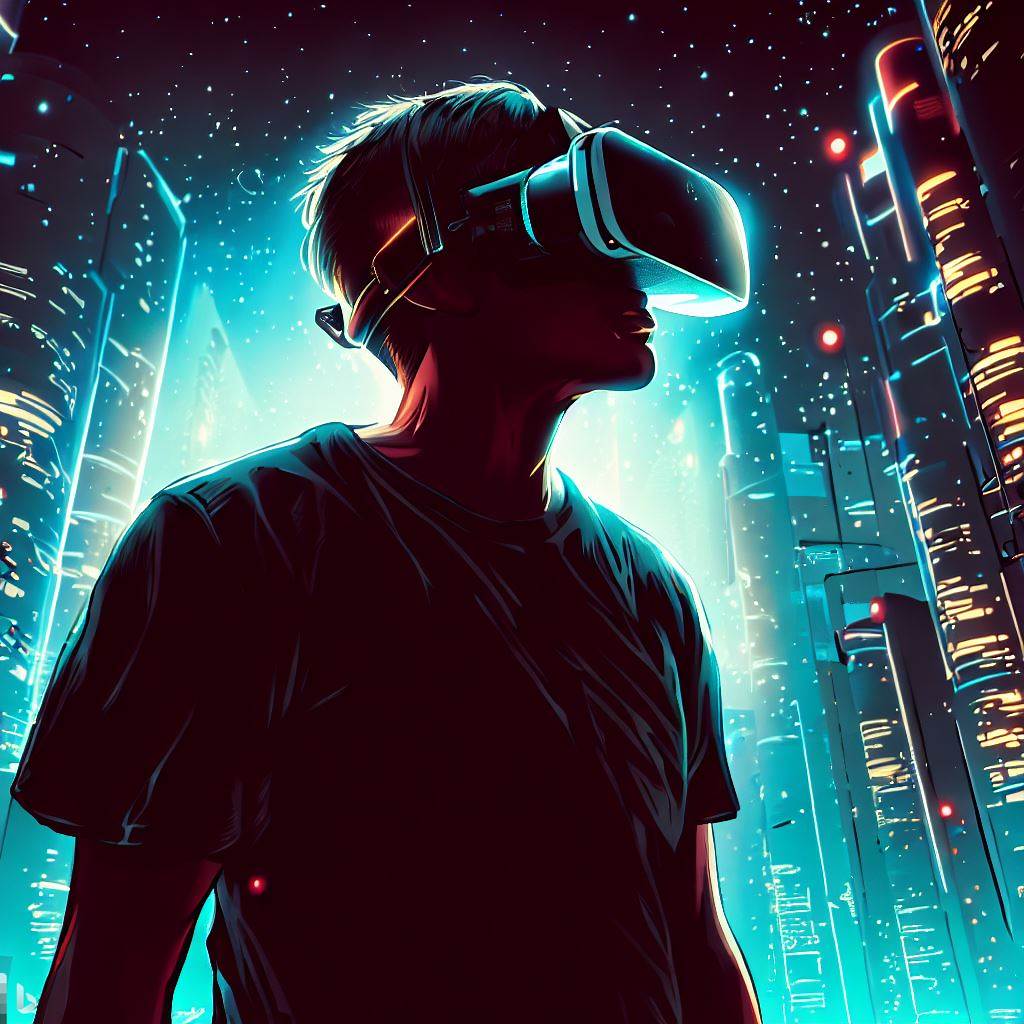
The Metaverse is rapidly evolving, with numerous cutting-edge innovations shaping its future. In this section, we’ll delve into the latest developments that are taking us closer to the Metaverse’s realization.
We’ll cover advancements in technology, new platforms, and emerging trends that are propelling the Metaverse forward. So, buckle up and let’s explore the frontiers of the Metaverse!
Revolutionary Technologies
The Metaverse is being fueled by groundbreaking advancements in various technologies. Here are a few notable examples:
- Virtual Reality (VR): VR headsets like the Meta Quest 2 and Valve Index offer increasingly immersive experiences, with enhanced visual fidelity, tracking capabilities, and haptic feedback. These innovations are making virtual worlds more lifelike and engaging.
- Augmented Reality (AR): AR devices such as the Microsoft HoloLens 2 and the emergence of AR-enabled smartphones are blending digital content with our physical surroundings, providing new ways to interact with the Metaverse.
- Spatial Computing: Spatial computing technologies enable users to interact with digital content through natural gestures and movements, fostering more intuitive and immersive experiences in virtual environments.
New Platforms and Ecosystems
A variety of new platforms and ecosystems are emerging, each contributing unique elements to the Metaverse. Here are a few key players to keep an eye on:
- Roblox: A user-generated content platform that enables players to create, share, and monetize their own games and experiences. Roblox showcases the potential of a thriving Metaverse ecosystem driven by creativity and collaboration.
- Fortnite: A massively popular game that has evolved into a social hub, hosting virtual concerts, movie premieres, and interactive events. Fortnite demonstrates the convergence of gaming, entertainment, and socializing in the Metaverse.
- Horizon Workrooms: A virtual reality collaboration platform developed by Meta (formerly Facebook). Horizon Workrooms highlights the potential of the Metaverse for remote work and productivity.
Emerging Trends and Use Cases
The Metaverse is giving rise to various new trends and use cases that are reshaping industries and transforming the way we interact with the digital world. Here are some noteworthy examples:
- Virtual Fashion and Avatars: Digital fashion is gaining traction, with brands like Gucci and Nike creating virtual clothing and accessories for avatars. Users are increasingly investing in digital goods to express their identity and style in the Metaverse.
- Virtual Land Ownership: Platforms like Decentraland and The Sandbox allow users to buy, sell, and develop virtual land. This has given rise to a booming virtual real estate market, with users investing in digital properties for various purposes, such as virtual galleries, shops, and event spaces.
- Digital Art and NFTs: Non-fungible tokens (NFTs) are revolutionizing the art world, enabling creators to tokenize their digital art and sell it directly to collectors. This trend is spilling over into the Metaverse, with users showcasing their NFT collections in virtual galleries and museums.
As you can see, the Metaverse is teeming with innovation and new developments. These advancements are redefining the boundaries of what’s possible in the digital realm, and with each passing day, we inch closer to the ultimate vision of a fully-realized Metaverse.
But this brings us to the big question: When will the Metaverse come out, and what can we expect when it does? Let’s dive into this intriguing question in the next section.
The Big Question: When Will the Metaverse Come Out, and What Can We Expect?
Ah, the million-dollar question! As we venture deeper into the realm of the Metaverse, it’s only natural to wonder when it will truly come to life.
While it’s difficult to pinpoint an exact date, we can certainly discuss the factors that will influence its emergence and the expectations we can have when it finally arrives. So, without further ado, let’s explore the future of the Metaverse!
The Path to the Metaverse
The road to the Metaverse is a journey, not a destination. It’s an ongoing process of development, driven by the convergence of numerous technologies, platforms, and trends. Here are a few key factors that will shape its arrival:
- Technological Advancements: As technologies like VR, AR, and spatial computing continue to evolve, the level of immersion and interactivity in the Metaverse will increase. The development of new devices, tools, and infrastructure will play a crucial role in bringing the Metaverse to fruition.
- Interoperability: Seamless integration between various platforms and ecosystems is essential for the Metaverse’s realization. The development of open standards and protocols will enable users to traverse different virtual worlds and engage in cross-platform experiences.
- Mass Adoption: The Metaverse will gain momentum as more users, businesses, and institutions recognize its potential and begin to integrate it into their daily lives. Mass adoption will drive further innovation and investment in the space.
What to Expect from the Metaverse
While it’s impossible to predict every detail of the Metaverse, we can certainly discuss some of the exciting possibilities that await us:
- A New Digital Economy: The Metaverse will give rise to a vibrant digital economy, with opportunities for users to buy, sell, and trade virtual goods, services, and assets. This will encompass everything from virtual real estate to digital fashion and NFTs.
- Boundless Creativity and Collaboration: The Metaverse will empower users to create, share, and monetize their own content, fostering a rich ecosystem of user-generated experiences. This will enable unprecedented levels of collaboration and co-creation across various industries and disciplines.
- Immersive Entertainment and Social Experiences: The Metaverse will redefine entertainment, offering immersive and interactive experiences that blend gaming, music, film, and more. Virtual events and social gatherings will bring people together in new and exciting ways.
- Expanded Opportunities for Learning and Work: The Metaverse will transform the way we learn and work, providing access to immersive educational resources and virtual collaboration spaces. This will revolutionize productivity and enable new opportunities for remote work and professional development.
As we stand on the cusp of the Metaverse’s arrival, the possibilities are endless. The future is undoubtedly bright, and with each new development, we move closer to realizing the incredible potential of this new digital frontier.
In conclusion, while it’s challenging to determine an exact date for the Metaverse’s full emergence, it’s clear that we’re witnessing its rapid evolution.
By understanding its history, current developments, and the factors shaping its future, we can better prepare ourselves for the exciting possibilities that lie ahead.
So, stay curious, stay informed, and get ready to embark on an incredible journey into the Next Frontier of the Metaverse!

